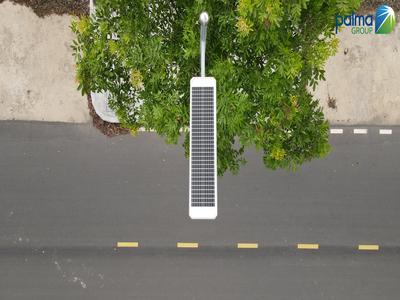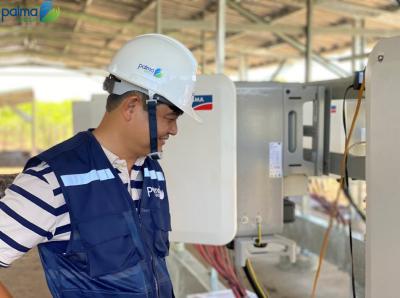News
PALMA SOLUTIONS JSC
What’s the easiest way to speed up installation of solar systems?
Continuing education is important in all industries, especially solar. As technologies evolve, new installation techniques arise to make solar systems safer and more efficient. The best place to learn these new skills is often at tradeshows and conferences, when more industry peers are together to exchange tips and tricks.
On account of coronavirus halting gatherings for awhile, we reached out to the would-be presenters at the NABCEP Continuing Education conference for their best advice on three questions:
What’s the easiest way to speed up installation of solar systems?
What’s the most common installation error in a solar or battery installation?
What’s the best way for installers to improve customer satisfaction?
See their answers and more below. Follow us on Twitter to see even more installer-focused tips during our annual SPW Installation Week. We hope you’ll learn some new strategies to make your business stand out as we approach uncharted waters. Oh, and check out Solar Energy International for online solar training.
What’s the easiest way to speed up installation of solar systems?

Quick Mount PV
“Keeping a tight focus on the quality of the products and workmanship of the initial installation is often the best way to save time.”
-Chris Fisher, Manager of Solar Product Development & Marketing, CertainTeed
“Have all the settings worked out and pre-configured as much as possible before arriving on site. This can be quite complex and time-consuming in the best of circumstances, let alone under pressure at the job site.”
-Kyle Willsey, Senior Sales Engineer, Morningstar Corp.
“Creating a consistent process of installation steps and stage-workspace with all needed materials can help to speed up installations.”
-Ben Brubaker, Applications Engineer & Trainer, Fronius
“The crew should divide the tasks to complete the mount installation like a factory production line. Even if there are only two crew members, splitting up the tasks of preparing the mount location and installing the mount can save time and hassle.”
-Susan Stark, Director, Technical Sales & Training, Quick Mount PV
“If you do similar designs every time but you do them from scratch, you’re spending a lot of time retreading the same ground. Setting up defaults for component selection, simulation considerations, or other elements of design allows a designer to spend their time focusing on what is actually unique about each project.”
-Canute Haroldson, Senior Account Manager, Folsom Labs
“Teamwork is important, and communication is key. It is critical that each crew member understands the steps and their role in the process.”
-Kate Collardson, Product Manager, BayWa r.e.
“As use cases for solar + storage become more complex, it becomes more important to utilize software in both the design stage and the ultimate operation of the system. When the use case was a remote cabin, pencil and paper could do an adequate design job. In a grid-connected facility with PV, a generator, a BESS, controllable loads, backup power for a subset of loads, and a desire to peak shave and load shift — design software and an energy management system (EMS) are vital. Modern design software creates a virtual twin of the system, simulates a year (or more) of operation, and allows iterations of variables to zero-in on an optimized system. Try that with a pencil and paper.”
-Wesley Kennedy, Systems Engineering Specialist, Blue Planet Energy
“The easiest way to speed up solar monitoring installation is to have a laptop onsite for the initial programming. By having a laptop on site, installers can use on-site automatic device detection and confirm that all devices, including the data logger, are connected correctly and communicating with the portal.”
-Silvia Blumenschein-Schϋtz, CEO and General Manager, Solar Data Systems
Comments
Kifa
March 30, 2020 at 4:14 am
I found the above post useful as I was about to install a solar system in my parent’s house. The tips offered by professional experts seems to be practical and easily understandable. It’s surprising to know the use of technology in the installation of the solar system. I recommend others to install solar system in your house to reduce the carbon footprint.
Reply
Solarman
March 23, 2020 at 7:21 pm
This one pretty much sums up and resonates the most for todays technology and the up coming NEC code changes for 2020:
““As use cases for solar + storage become more complex, it becomes more important to utilize software in both the design stage and the ultimate operation of the system. When the use case was a remote cabin, pencil and paper could do an adequate design job. In a grid-connected facility with PV, a generator, a BESS, controllable loads, backup power for a subset of loads, and a desire to peak shave and load shift — design software and an energy management system (EMS) are vital. Modern design software creates a virtual twin of the system, simulates a year (or more) of operation, and allows iterations of variables to zero-in on an optimized system. Try that with a pencil and paper.””
-Wesley Kennedy, Systems Engineering Specialist, Blue Planet Energy
For particular applications of solar PV and smart ESS, once a “template” is set up, downloading the software programming can be the most tedious, next would be specific parameters for a specific system and types of energy use programs used by the local utility. IE) tiered electricity rates, TOU rate spiking in the late afternoon and early evening and off peak electric rates offered by the utility from late at night to early morning hours one could use to charge up the ESS with cheap energy to use during the early morning wake up hours before solar PV starts to generate good usable power for the day. Comprehensive “batch files” on a laptop can save one hours of programming.
Folow link: https://www.solarpowerworldonline.com/
02/06/2022 11:45:06
News other
THE ADVANTAGES AND DISADVANTAGES OF USING SOLAR LIGHTING
Palma Energy và Palma Group tổng kết hoạt động đầu tư Hệ thống NLMT mái nhà tại các cửa hàng Điện Máy Xanh
 PALMA SOLUTIONS JSC
PALMA SOLUTIONS JSC


![[PALMA x NOVALAND] BUỔI CHIA SẺ BẢO TRÌ VÀ BẢO DƯỠNG ĐÈN CẢNH QUANG NĂNG LƯỢNG MẶT TRỜI PLL-30 TẠI NOVA HILLS – MŨI NÉ [PALMA x NOVALAND] BUỔI CHIA SẺ BẢO TRÌ VÀ BẢO DƯỠNG ĐÈN CẢNH QUANG NĂNG LƯỢNG MẶT TRỜI PLL-30 TẠI NOVA HILLS – MŨI NÉ](https://palmagroup.vn/upload/z3634653067260_15cb1f4d62b14f3a684fdf4ee9de4870_-11-08-2022-13-55-36.jpg)



_-24-10-2021-21-55-01.png)
_-21-04-2022-13-38-01.png)